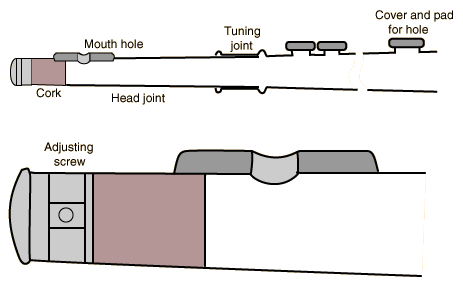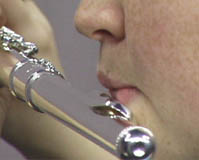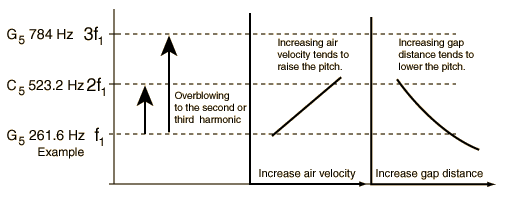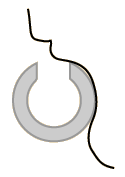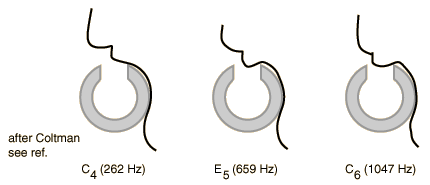The Flute
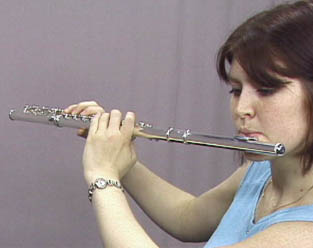 |
The flute is made in the form of an open cylindrical air column about 66 cm long. Its fundamental pitch is middle C (C4) and it has a range of about three octaves to C7. Sound is produced from a flute by blowing onto a sharp edge, causing air enclosed in a tube to vibrate. |
The modern flute was developed by Theobald Boehm who experimented with it from 1832 to 1847, desiring to give it a bigger tone. He finally produced a parabolic (bowl-shaped) head joint attached to a cylindrical body with open-standing keys and finger pads to cover large finger holes. Since then, other minor improvements have been made. The modern flute usually has a range from middle C (C4) upward for about three octaves. In Europe flutes are often constructed of wood; silver is commonly used in the United States.
Thanks to Sara Booker for helping to demonstrate the instrument.

| Construction details | Waveform examples | Overblowing the flute |
Woodwind instruments
Musical instruments
References
Boehm
Toff
Quantz
| HyperPhysics***** Sound | R Nave |
